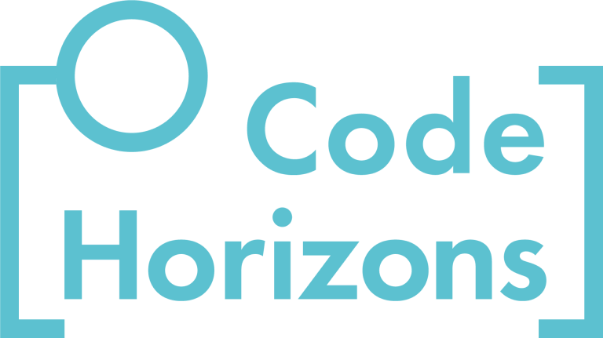To learn more about the latest methodologies and techniques for understanding and quantifying biological age, join Professor Lauren Gaydosh for Analysis of Biological Aging, March 14-16.
Have you ever wondered why some people seem to defy the aging process, looking and feeling younger than their chronological age, while others seem to age more rapidly? The answer lies deep within our biology, in a process known as biological aging. This process is a universal experience, yet it varies significantly among individuals, influenced by a complex interplay of genetic, environmental, and lifestyle factors.
The essence of biological aging
Biological aging is essentially the wear and tear of our cells and organs over time, a gradual decline that affects every system in our body (Jackson et al., 2003). According to the geroscience hypothesis, there may be only a small number of generalized mechanisms that drive the myriad diseases and morbidities that we associate with aging (Kennedy et al., 2014).
One potential aging mechanism is DNA methylation, a topic that has generated enormous interest due in part to the availability of new and more affordable technologies for the measurement of molecular data. DNA methylation refers to the addition or subtraction of chemical tags, or methyl groups, to DNA. This dynamic process is responsible for cell differentiation – what turns a stem cell into a skin cell or a liver cell and keeps it in that state.
DNA methylation is central to aging research because there appear to be global changes both in average methylation levels and the variance of those levels that occur with age. For over a decade, researchers have been attempting to understand and exploit those changes in order to construct a measure of biological age, known as an epigenetic or DNA methylation clock.
LEARN MORE IN A SEMINAR WITH LAUREN GAYDOSH
Constructing epigenetic clocks
Epigenetic clocks are generally constructed with machine learning algorithms, like elastic net regression, which are trained to predict chronological age or an age-related phenotype. The training is typically done with samples that have a rich collection of measurements of biomarkers and other phenotypes related to aging. The models yield a set of weights that apply to selected methylation sites, which can then be used to estimate biological age in other samples that only measure DNA methylation.
The deviation between predicted biological age and chronological age is an indication of either age acceleration (when biological age exceeds chronological age) or age deceleration (when biological age is lower than chronological age). Biological age can also be used:
- To predict risk for disease and mortality.
- As an outcome of social and environmental exposure.
- As a surrogate endpoint for aging interventions.
There are even several commercial companies that will now you sell test kits to collect your blood or saliva, and will then report your biological age based on methylation clocks. However, many experts warn that these tests can be highly unreliable for evaluating a single individual.
Biological age of whom?
There is much to be excited about as the field of biological age measurement progresses. However, there is also a need for caution, particularly as we move to apply epigenetic clock algorithms beyond the samples on which they were trained. Machine learning methods are designed to maximize prediction in the training data (together with methods to avoid overfitting). As with many machine learning applications, however, the external validity of the models may be limited by the data used to train and test the algorithm.
Unfortunately, much of the data used to train these clocks has relied on clinical samples, volunteer samples, or convenience samples (Watkins et al., 2023). Furthermore, many samples are from older, non-Hispanic White adults living in Western industrialized countries. For example, one of the most recent and innovative clocks in current use was constructed in a birth cohort from one city in New Zealand (Belsky et al., 2022). This lack of diversity is a concern not just with epigenetic clocks but with epigenetic data writ large (Breeze et al., 2022). And that begs the question, do such algorithms accurately reflect biological aging for everyone?
If the data used to train epigenetic clocks do not include marginalized and disadvantaged groups for whom processes of aging may be accelerated due to stressful or hazardous exposures, that may adversely influence the aging signatures developed. Notably, several studies have tested their algorithms in more diverse samples, finding either no difference in performance or poorer performance.
It’s not clear to what extent and in what direction the unrepresentativeness of training data may bias our results. However, one recent study in a nationally representative sample of older adults found on average slower epigenetic aging among participants who identified as Black compared to those who identified as White (Crimmins et al., 2021). This is contrary to a vast literature documenting worse aging outcomes among Black Americans.
As the field progresses, it will be crucial to collect DNA methylation data on diverse and nationally representative samples, as well as to validate existing clock algorithms in heterogeneous populations across important sociodemographic characteristics. Failure to do so could exacerbate health and aging inequities.
References
Belsky DW, Caspi A, Corcoran DL, et al. DunedinPACE, a DNA methylation biomarker of the pace of aging. Elife. 2022;11. doi:10.7554/ELIFE.73420 https://elifesciences.org/articles/73420
Breeze CE, Beck S, Berndt SI, Franceschini N. The missing diversity in human epigenomic studies. doi:10.1038/s41588-022-01081-4 https://www.nature.com/articles/s41588-022-01081-4
Crimmins EM, Thyagarajan B, Levine ME, Weir DR, Faul J. Associations of Age, Sex, Race/Ethnicity, and Education With 13 Epigenetic Clocks in a Nationally Representative U.S. Sample: The Health and Retirement Study. The Journals of Gerontology: Series A. 2021;76(6):1117-1123. doi:10.1093/GERONA/GLAB016 https://academic.oup.com/biomedgerontology/article/76/6/1117/6102583
Gutin I, Hummer RA. Social Inequality and the Future of US Life Expectancy. Annu Rev Sociol. 2021;47. doi:10.1146/annurev-soc-072320-100249 https://www.annualreviews.org/doi/abs/10.1146/annurev-soc-072320-100249
Jackson SHD, Weale MR, Weale RA. Biological age—what is it and can it be measured? Arch Gerontol Geriatr. 2003;36(2):103-115. doi:10.1016/S0167-4943(02)00060-2 https://www.sciencedirect.com/science/article/abs/pii/S0167494302000602?via%3Dihub
Kennedy BKB, Berger SLS, Brunet A, et al. Geroscience: linking aging to chronic disease. Cell. 2014;159(4):709-713. doi:10.1016/j.cell.2014.10.039 https://www.sciencedirect.com/science/article/pii/S009286741401366X
Rutledge J, Oh H, Wyss-Coray T. Measuring biological age using omics data. Nature Reviews Genetics 2022 23:12. 2022;23(12):715-727. doi:10.1038/s41576-022-00511-7 https://pubmed.ncbi.nlm.nih.gov/35715611/
Watkins SH, Testa C, Chen JT, et al. Epigenetic clocks and research implications of the lack of data on whom they have been developed: a review of reported and missing sociodemographic characteristics. Environ Epigenet. 2023;9(1). doi:10.1093/EEP/DVAD005 https://academic.oup.com/eep/article/9/1/dvad005/7224619


